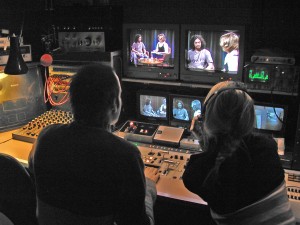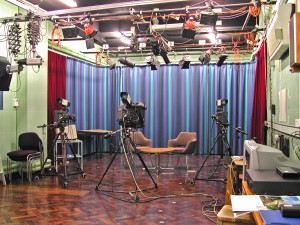If you were studying Chemistry at Imperial College in the early 1980’s you would almost certainly have come across the series of teaching videos that we made. These were designed to provide a single definitive version of classic experiments carried out in the labs. The way that it worked was that during a lab period students would have a number of ‘demonstrators’ who positioned themselves around the lab. They would then proceed to show the undergrads the way to achieve what was needed of them during the session. This was deemed to have flaws when it was discovered that very slightly different versions were actually being demonstrated. So, colleagues in the Chemistry Department asked for some of the experiments and also the techniques required, to be captured on video. These videos would then be made available to the students in the college library, prior to the lab session day and also at the start of the actual lab session via video players located around the lab. Starting 32 years ago, from 1981 to 1993, 11 of these classic experiment videos were made. Two of these: ‘Recrystallisation’ and ‘Using an Oil Vacuum Pump’ are seen on this page, and are for archive interest only.
Making them was not always so easy. To capture the experiments we needed to be able to record, as much as possible, in ‘real time’. That is, record the action without stopping or having to then edit later. We needed to be able to try and capture what would have been demonstrated live in the lab. Also, when an experiment had started, it couldn’t always be stopped on a whim from me because I couldn’t get a good camera view! So, we had to be able to record with several cameras and this meant shooting in the College TV Studio** where we had three cameras available. Shooting this way meant we could, as much as possible, run in real time; if we had rehearsed what was going to happen. So, using three cameras we were able to plan ‘blocks’ of the experiments that could be recorded before we had to stop and reset cameras etc
Chemistry in a TV Studio has its problems though. And one of THE biggest problems was with white lab coats. Our early colour cameras had a single stripe vidicon tube in them and the bright white labs coats were susceptible to almost glowing in the end result shot . The light required for good pictures was a little higher than for black & white and highlights would very easily burn out, a good example being the glassware. The three cameras also had manual adjustment for colour, so getting all three to give well balanced images, all the looking same, was a nightmare at times! Another problem was ensuring that I could see on the monitors what was required, without a hand or shoulder blocking the view. We tended to position a monitor so that the person demonstrating could see whether or not this was happening. It was easier for them to move than for the cameras to do so.
After 32 years some of the videos are starting to show their age and playback is becoming difficult. It took a few hours before I could get a stable playback I was happy with, in order to transfer them onto DVD.
If you studied Chemistry and came across these teaching videos during your course then please do let us know via the comment option below.
** Even though we are now in a “YouTube video age”, sadly in February 2007 Imperial closed the TV Studio, along with its Control Room, Editing Suite and also the Video Conferencing Service. However, the videotape archive remains; but is now held in the main college archive facilities, which I still have access to when required.
Colin Grimshaw May 2013


